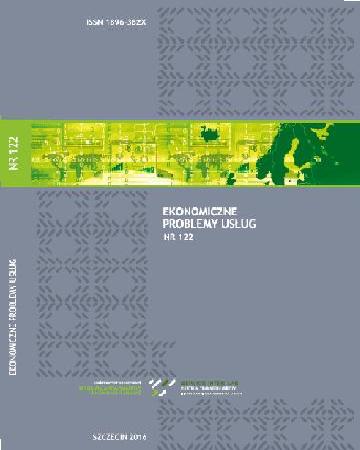
ISSN: 1896-382X
eISSN: 2353-2866
OAI
DOI: 10.18276/epu.2018.133/2-03



Issue archive /
nr 133 (2) 2018
The Revival of the Securitization Market after the Global Financial Crisis: A Case of Europe
| Authors: |
Maciej
Pawłowski
University of Szczecin |
| Keywords: | securitization securities financial crisis financial market |
| Data publikacji całości: | 2018-12-10 |
| Page range: | 9 (29-37) |
| Klasyfikacja JEL: | E44 G01 G15 |
Abstract
The aim of this study is to assess the post-crisis securitization market in Europe. The presented considerations focus on two fundamental aspects: (1) identification of changes in the regulatory environment of securitization in the European financial system and (2) analysis of changes in the size and structure of the European market for securitization of financial instruments between 1998 and 2017. The analysis is to answer the question of whether the European market for securitization of assets is reviving.
Download file
Article file
Bibliography
| 1. | Baig, S., Choudhry, M. (2013). The Mechanics of Securitization. A Practical Guide to Structuring and Closing Asset-Backed Security Transactions. Hoboken: John Wiley and Sons, Inc. |
| 2. | Beltran, D., Cordell, L., Thomas, C.P., (2016). Asymmetric Information and the Death of ABS CDOs. International Finance Discussion Papers 1075. |
| 3. | Brunnermeier, M. (2009). Deciphering the Liquidity and Credit Crunch 2007–2008. Journal of Economic Perspectives, 23, pp. 77–100. |
| 4. | Chrabonszczewska, E., Waszkiewicz, A. (2010). Ryzyko na międzynarodowych rynkach finansowych. Warsaw: Szkoła Główna Handlowa. |
| 5. | International Monetary Fund (2008). Global Financial Stability Report: Containing Systemic Risks and Restoring Financial Soundness. World Economic and Financial Surveys. Washington: International Monetary Fund. |
| 6. | International Organization of Securities Commissions (2010). Securitization and Securitized Debt Instruments in Emerging Markets. IOSCO’s Task Force on Securitization (TFOS) Final Report. Retrieved from: http://www.iosco.org (23.09.2018). |
| 7. | Keys, B., Mukherjee, T., Seru, A., Vig, V. (2010). Did securitization lead to tax screening? Evidence from subprime loans. The Quarterly Journal of Economics, 125, pp. 307–362. |
| 8. | Kothari, V. (2006), Securitization. The Financial Instrument of the Future. Hoboken–New Jersey: John Wiley & Sons. |
| 9. | Pawłowski, M. (2018). Financing the solar energy market through the use of securitization – the case of the United States. Copernican Journal of Finance & Accounting, 2 (7), pp. 63–76. DOI: http://dx.doi.org/10.12775/CJFA.2018.009. |
| 10. | Regulation of the European Parliament and of the Council (2015). Laying down common rules on securitization in creating a European framework for simple, transparent and standardized securitization. 2015/0226. Retrieved from: https://eur-lex.europa.eu. |
| 11. | Regulation of the European Parliament and of the Council (2017). Laying down a general framework for securitization and creating a specific framework for simple, transparent and standardized securitization. 2017/2402. Retrieved from: https://eur-lex.europa.eu |
| 12. | Reksa, Ł. (2007). Sekurytyzacja w krajach Unii Europejskiej oraz w polskim systemie bankowym. Warsaw: Generalny Inspektorat Nadzoru Bankowego. |
| 13. | Schwarcz, S.L (2016). Securitization and Post-Crisis Financial Regulation. Cornell Law Review Online. 101. 115–139. Retrieved from: https://ssrn.com/abstract=2701556 (24.11.2018) |
| 14. | Securities Industry and Financial Markets Association (2018). Retrieved from: www.sifma.org (04.12.2018). |
| 15. | Segoviano, M., Jones, B., Lindner, P., Blankenheim, J. (2013). Securitization: Lessons Learned and the Road Ahead. IMF Working Paper No. 13/255. Retrieved from: https://ssrn.com/ abstract=2381853 |
| 16. | Waszkiewicz, A. (2010). Sekurytyzacja a kryzys subprime. Zarządzanie Zmianami, 1, pp. 3–21. |
| 17. | Waszkiewicz, A., Ponowne narodziny sekurytyzacji? Retrieved from: http://alterum.pl (22.09.2018). |